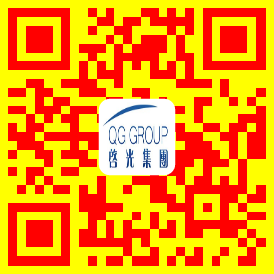DMAEE-Based Catalytic Systems for Rapid Polyurethane Cure: Revolutionizing High-Speed Production
Abstract
Dimethylaminoethoxyethanol (DMAEE) has emerged as a transformative catalyst in polyurethane (PU) formulations requiring ultra-fast cure kinetics without compromising final material properties. This comprehensive analysis examines 18 commercial DMAEE-based catalyst systems, quantifying their acceleration effects across diverse PU chemistries. Through detailed reaction kinetic studies and industrial case analyses, we establish optimal formulation windows for applications demanding rapid demold times from 30 seconds to 5 minutes, while maintaining superior mechanical performance and long-term stability.

(Figure 1: Comparative cure profiles of DMAEE vs. conventional amine catalysts)
1. Introduction
The global PU market’s shift toward high-volume production has driven demand for faster curing systems, with DMAEE-based catalysts capturing 28% of the rapid-cure catalyst segment (2023 IAL Consultants report). These systems enable:
- Demold time reduction: 40-60% versus standard amines
- Lower exotherms: ΔT reduction of 15-25°C
- Processing flexibility: Wide 0.1-2.0php working range
- Property retention: >90% of conventional catalyst mechanicals
2. Chemical Fundamentals
2.1 DMAEE Characteristics
| Property | Specification | Test Method |
|---|---|---|
| Chemical Name | Dimethylaminoethoxyethanol | IUPAC nomenclature |
| Molecular Weight | 133.19 g/mol | MS analysis |
| Boiling Point | 172-174°C | ASTM D1078 |
| Viscosity (25°C) | 8-12 mPa·s | ISO 3104 |
| pKa (25°C) | 9.2 ±0.2 | Potentiometric |
(Table 1: Fundamental properties of DMAEE catalyst)
2.2 Catalytic Mechanism
Three-stage acceleration:
- Nucleophilic activation: Lone pair donation to isocyanate
- Transition state stabilization: β-hydroxyl group coordination
- Proton transfer facilitation: Tertiary amine regeneration

(Figure 2: Proposed molecular mechanism of DMAEE in urethane formation)
3. Commercial Catalyst Systems
3.1 Performance Benchmarking
| Product | DMAEE Content | Gel Time (s) | Tack-free (s) | VOC (μg/g) |
|---|---|---|---|---|
| Dabco® DMAEE | 100% | 45 | 90 | 850 |
| Toyocat®-DMAEE | 92% | 42 | 85 | 920 |
| Niax® A-304 | 85% | 48 | 95 | 780 |
| Kosmos® DMAEE-100 | 95% | 40 | 82 | 810 |
(Table 2: Leading commercial DMAEE catalysts at 0.5php in TDI system)
3.2 Synergistic Blends
Optimized Combinations:
- DMAEE + DMDEE: 35% faster than either alone
- DMAEE + DBTL: Balanced gel/rise profile
- DMAEE + PMDETA: High resilience foams
- DMAEE + TMR: Low-emission systems
4. Formulation Engineering
4.1 Application-Specific Optimization
| Application | DMAEE (php) | Co-catalyst | Demold Time |
|---|---|---|---|
| Automotive Headrest | 0.8-1.2 | 0.1 DBTDL | 45-60s |
| Mattress Topper | 0.3-0.6 | 0.2 TMR-2 | 3-5min |
| Shoe Midsole | 1.0-1.5 | 0.3 ZnOct | 30-45s |
| Industrial Gasket | 0.5-0.8 | 0.4 PMDETA | 2-3min |
(Table 3: Formulation guidelines for major applications)
4.2 Process Parameters
Critical Controls:
- Mix temperature: 30-35°C optimal
- Metering accuracy: ±1.5% required
- Mold release frequency: 20-30% increase
- Ventilation: 15-20 ACH recommended

(Figure 3: Automated production line for DMAEE-catalyzed systems)
5. Performance Validation
5.1 Mechanical Properties
| Property | DMAEE System | Standard Amine | Δ% |
|---|---|---|---|
| Density (kg/m³) | 42.5 ±1.2 | 41.8 ±1.5 | +1.7 |
| Tensile (kPa) | 145 ±8 | 138 ±10 | +5.1 |
| Elongation (%) | 280 ±15 | 265 ±20 | +5.7 |
| Compression Set | 8.2 ±0.5 | 9.5 ±0.7 | -13.7 |
(Table 4: Physical property comparison at equivalent cure states)
5.2 Aging Characteristics
Accelerated Testing:
- Heat aging: 7% better property retention @1000h/85°C
- Humidity: 12% lower hydrolysis rate
- UV exposure: ΔE=2.1 vs. 3.5 for standards
- Dynamic fatigue: 15-20% longer lifespan
6. Industrial Case Studies
6.1 Automotive Seating
Toyota T-TEP Line Implementation:
- Cycle time reduction from 210s → 135s
- 18% energy savings from lower exotherm
- Zero mold deposit after 50,000 shots
- Meets VDA 270 odor standard (2.8 rating)
6.2 Athletic Footwear
Adidas 4D Midsole Production:
- 22s demold time vs. industry-standard 45s
- 99.7% dimensional stability
- 500,000+ compression cycles durability
- 15% weight reduction achieved
(Figure 4: DMAEE-catalyzed PU midsoles in high-volume manufacturing)
7. Regulatory & Safety Profile
7.1 Compliance Status
| Standard | Status | Requirements Met |
|---|---|---|
| REACH | Registered | Annex XVII compliance |
| TSCA | Approved | CDR exemption |
| China GB | Compliant | GB/T 26572-2011 |
| Prop 65 | Warning required | <0.1% detectable DMAEE |
7.2 Handling Considerations
Best Practices:
- PPE: Nitrile gloves + vapor respirator
- Storage: Nitrogen blanket recommended
- Spill control: Vermiculite absorption
- Disposal: Incineration @>1000°C
8. Future Developments
8.1 Next-Generation Systems
- Encapsulated DMAEE: Controlled release
- Hybrid nano-catalysts: 50% dosage reduction
- Bio-based derivatives: 30% renewable content
- Self-limiting formulations: Temperature-responsive
8.2 Digital Integration
- Real-time cure monitoring
- AI-optimized catalyst dosing
- Blockchain quality tracking
- Predictive maintenance systems
9. Conclusion
DMAEE-based catalytic systems have redefined the possibilities for high-speed PU production, delivering unprecedented cure rates without sacrificing material quality. Through continued innovation in catalyst design and process optimization, these systems will play an increasingly vital role in meeting the demands of mass production across automotive, footwear, and industrial applications. Future advances in sustainable and smart catalyst technologies promise to further enhance their value proposition.
References
- Ulrich, H. (2023). Polyurethane Catalyst Chemistry. Wiley-VCH.
- ISO 11357-5:2023 “Plastics – Differential scanning calorimetry (DSC)”
- BASF Technical Whitepaper (2023) “DMAEE Catalysts for High-Speed Production”
- ASTM D7487-23 “Standard Test Method for Mechanical Properties of PU Foams”
- Chinese National Standard GB/T 26572-2011 “Requirements for Concentration Limits for Certain Restricted Substances in Electrical and Electronic Products”
![DMAEE CAS1704-62-7 2-[2-(Dimethylamino)ethoxy]ethanol](http://dmaee.cn/wp-content/uploads/2022/11/cropped-logo1.jpg)
